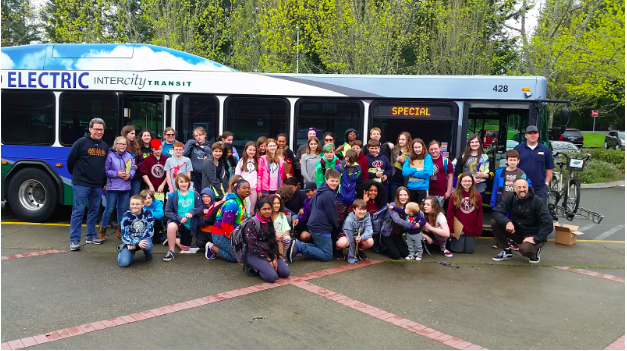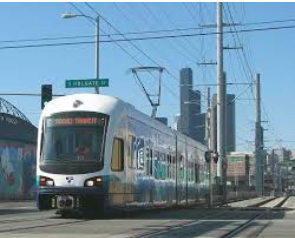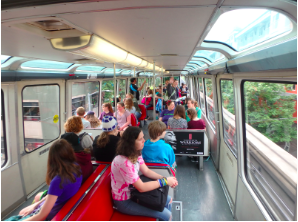The Nisqually River Education Project, South Sound GREEN and Chehalis Basin Education Consortium are offering the first ever Climate Resiliency Fellows. This program aims to build a dynamic community of engaged teachers committed to engaging their students in learning about and taking action in local climate change issues and climate resiliency projects. The Fellows program is offered as a part of a 3 year, environmental literacy program supported by NOAA. Teachers in the program meet quarterly to receive curriculum support and brainstorm ideas for action projects that address local issues. Matthew Phillipy is a teacher at Marshall Middle School and one of our Fellows participating this year. Here, he shares his conclusions on overpopulation and what that means for future conservation efforts, especially with transportation. Thank you, Matthew, for such an insightful blog!
Most kids get to school via school bus, but some carpool, some walk and some, like me when I was a kid, ride bikes. But how do adults get to work? Errends, recreation, etc. Most drive their cars, and most of the time all by themselves. We call this single occupancy. Take a drive from Olympia to Seattle via I-5 and see how many cars are single occupancy, chances are the vast majority. Some adults will carpool and some may even-gasp-take the bus or the Sounder train! Part of the American dream was to own an automobile and freedom will be yours. That notion is not a reality in the 21st century and certainly not feasible with over 7 billion humans. Could you imagine a world with 7 billion cars all driving at once!? Scientists predict that human population will continue to grow to 9 billion by mid-century. We can’t have all those people driving single occupancy cars to and from work can we? To compound the human population problem, most humans will be living in urban areas where parking and congestion have been major problems for decades. By mid-century it is predicted that close to 75% of humans will live in urban areas. How will these humans get around? Not in single occupancy cars thats for sure!
In another decade our kids will be part of the majority that live in urban areas with the need to be mobile in dense urban ecosystems. Gas will surely be reserved for the rich. Climate change will still be a challenge. Parking will be so ridiculous that no one in their right mind would attempt to drive in the city. So where does that leave our kids? We teach our students to read, to multiply and how to be scientifically literate. But we do nothing to prepare them to be mobile in an increasingly dense urban environment.
This year the students of Marshall Middle School’s Citizen Science Institute learned all about transportation. Students visited museums to see how pioneers arrived in covered wagons via the Oregon Trail. Kids learned about the railroad heydays of land grants and corruption and how burning copious amounts of coal to move people and products was never going to be a long term solution. They learned about the dawn of the assembly line and how cars became the focal point of our suburban lives when gas was cheap. Students then learned that there are alternatives to these unsustainable modes of movement. This year we teamed up with Intercity Transit to tour Olympia on an electric hybrid bus that moved 50 kids and took plenty of cars off the road in the process. Students also got to ride the monorail in Seattle to see how a past generation envisioned the future of transportation. Our students participated in bike-to-school week and learned that exercise can be fun and an effective way to get around town. Finally we rode the new light rail system that seattle is currently working on to connect the Puget Sound area.
We may not have the best alternatives right now for getting around, but if we don’t teach our kids and let them experience mass transit now we will not be where we need to be a generation from now. Our kids are the answer to the transportation question. Now we just need to let them out of the classroom and into the real world so they can start dreaming up what the future of transportation will look like.



